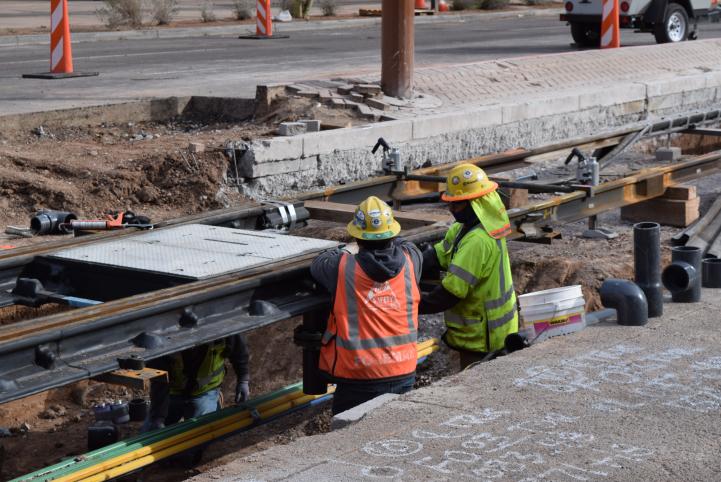Building new track in downtown Phoenix creates temporary light rail service adjustment


Phoenix, AZ — Construction progress continues on the South Central Extension/Downtown Hub light rail project in Phoenix. Crews are about to begin work that will connect the current and future lines, creating a two-line light rail system and transfer hub in downtown Phoenix by 2024. This spring, workers will install nine new pieces of special track, reconstruct more than 1,000 feet of track and build one station foundation as part of the Downtown Hub.
To make this important track connection, construction will occur on the existing light rail trackway. As a result, from April 16-July 2, all light rail trains are estimated to arrive at station platforms every 20 minutes throughout the service day. Riders are asked to plan ahead to ensure timely arrivals at their destinations.
In addition to the temporary rail schedule, some stations in downtown Phoenix will be closed beginning Sunday, April 17. Learn more about the station closures that will be in effect at valleymetro.org/pardonourprogress. View the full schedule and plan your trips on the Valley Metro App or through the Trip Planner.

Construction will also impact vehicular traffic and pedestrian accessibility in downtown Phoenix beginning April 17. Restrictions include:
- Washington St. reduced to one lane between 2nd St. and 1st Ave.
- Washington St. direct access to northbound Central Ave. closed. Detour required.
- Southbound 1st St. closed at Washington St. No access to Washington St.
- Northbound 1st St. closed at Washington St. Access to Washington St. maintained.
- Access to One North Central Bldg. west parking lot maintained on Central Ave. south of Adams St.
For more information, visit valleymetro.org/southcentral or check the Construct VM-South Central app.
The South Central Extension/Downtown Hub project team developed this work plan based on safety, ability to maintain traffic, construction scheduling and minimizing impacts to riders.
Source: Valley Metro







